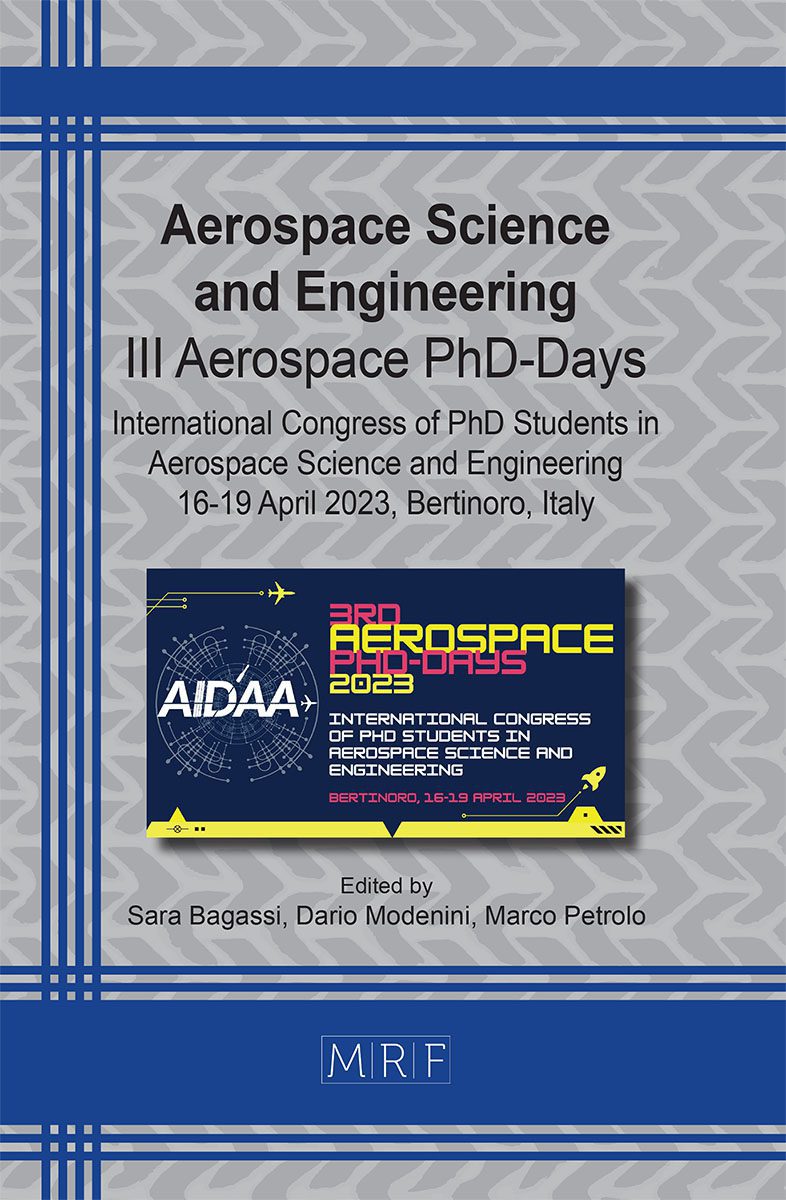Time domain aeroelastic analysis of wing structures by means of an alternative aeroelastic beam approach
Carmelo Rosario Vindigni
download PDFAbstract. In this work an alternative beam finite element for rapid time-domain flutter analysis of wings equipped with trailing edge control surfaces, generally distributed along the span, is presented. The aeroelastic beam finite element proposed is based on Euler-Bernoulli beam theory, De St. Venant torsion theory and two-dimensional time-domain unsteady aerodynamics. The developed finite element model is attractive for preliminary aero-servo-elastic analyses and flutter suppression systems design purposes; moreover, the finite element matrices obtained could be easily included in existing aeroelastic optimization codes that already use beam modelling of lifting structures to carry out aeroelastic tailoring studies.
Keywords
Aeroelastic Beam, Wing Stick Model, Wing-Aileron Flutter
Published online 9/1/2023, 6 pages
Copyright © 2023 by the author(s)
Published under license by Materials Research Forum LLC., Millersville PA, USA
Citation: Carmelo Rosario Vindigni, Time domain aeroelastic analysis of wing structures by means of an alternative aeroelastic beam approach, Materials Research Proceedings, Vol. 33, pp 213-218, 2023
DOI: https://doi.org/10.21741/9781644902677-31
The article was published as article 31 of the book Aerospace Science and Engineering
![]() Content from this work may be used under the terms of the Creative Commons Attribution 3.0 license. Any further distribution of this work must maintain attribution to the author(s) and the title of the work, journal citation and DOI.
Content from this work may be used under the terms of the Creative Commons Attribution 3.0 license. Any further distribution of this work must maintain attribution to the author(s) and the title of the work, journal citation and DOI.
References
[1] Theodorsen, T. (1949). General theory of aerodynamic instability and the mechanism of flutter (No. NACA-TR-496).
[2] Albano, E., & Rodden, W. P. (1969). A doublet-lattice method for calculating lift distributions on oscillating surfaces in subsonic flows. AIAA journal, 7(2), 279-285. https://doi.org/10.2514/3.5086
[3] Vindigni, C. R., & Orlando, C. (2022). Simple adaptive v-stack piezoelectric based airfoil flutter suppression system. Journal of Vibration and Control, 10775463221085854. https://doi.org/10.1177/10775463221085854
[4] Vindigni, C. R., Mantegna, G., Esposito, A., Orlando, C., & Alaimo, A. (2022). An aeroelastic beam finite element for time domain preliminary aeroelastic analysis. Mechanics of Advanced Materials and Structures, 1-9. https://doi.org/10.1080/15376494.2022.2124333
[5] Mozaffari-Jovin, S., Firouz-Abadi, R. D., & Roshanian, J. (2015). Flutter of wings involving a locally distributed flexible control surface. Journal of Sound and Vibration, 357, 377-408. https://doi.org/10.1016/j.jsv.2015.03.044
[6] Goland, M., & Luke, Y. L. (1948). The flutter of a uniform wing with tip weights. J. Appl. Mech. Mar 1948, 15(1),pp. 13-20. https://doi.org/10.1115/1.4009753
[7] Patil, M. J., Hodges, D. H., & Cesnik, C. E. (2000). Nonlinear aeroelastic analysis of complete aircraft in subsonic flow. Journal of Aircraft, 37(5), 753-760. https://doi.org/10.2514/2.2685
[8] Berci, M., & Cavallaro, R. (2018). A hybrid reduced-order model for the aeroelastic analysis of flexible subsonic wings—A parametric assessment. Aerospace, 5(3), 76. https://doi.org/10.3390/aerospace5030076
[9] Z. Qin and L. Librescu, Dynamic aeroelastic response of aircraft wings modeled as
anisotropic thin-walled beams, Journal of Aircraft 40 (2003), pp. 532–543. https://doi.org/10.2514/2.3127
[10] Beran, P. S., Khot, N. S., Eastep, F. E., Snyder, R. D., & Zweber, J. V. (2004). Numerical analysis of store-induced limit-cycle oscillation. Journal of Aircraft, 41(6), 1315-1326. https://doi.org/10.2514/1.404































